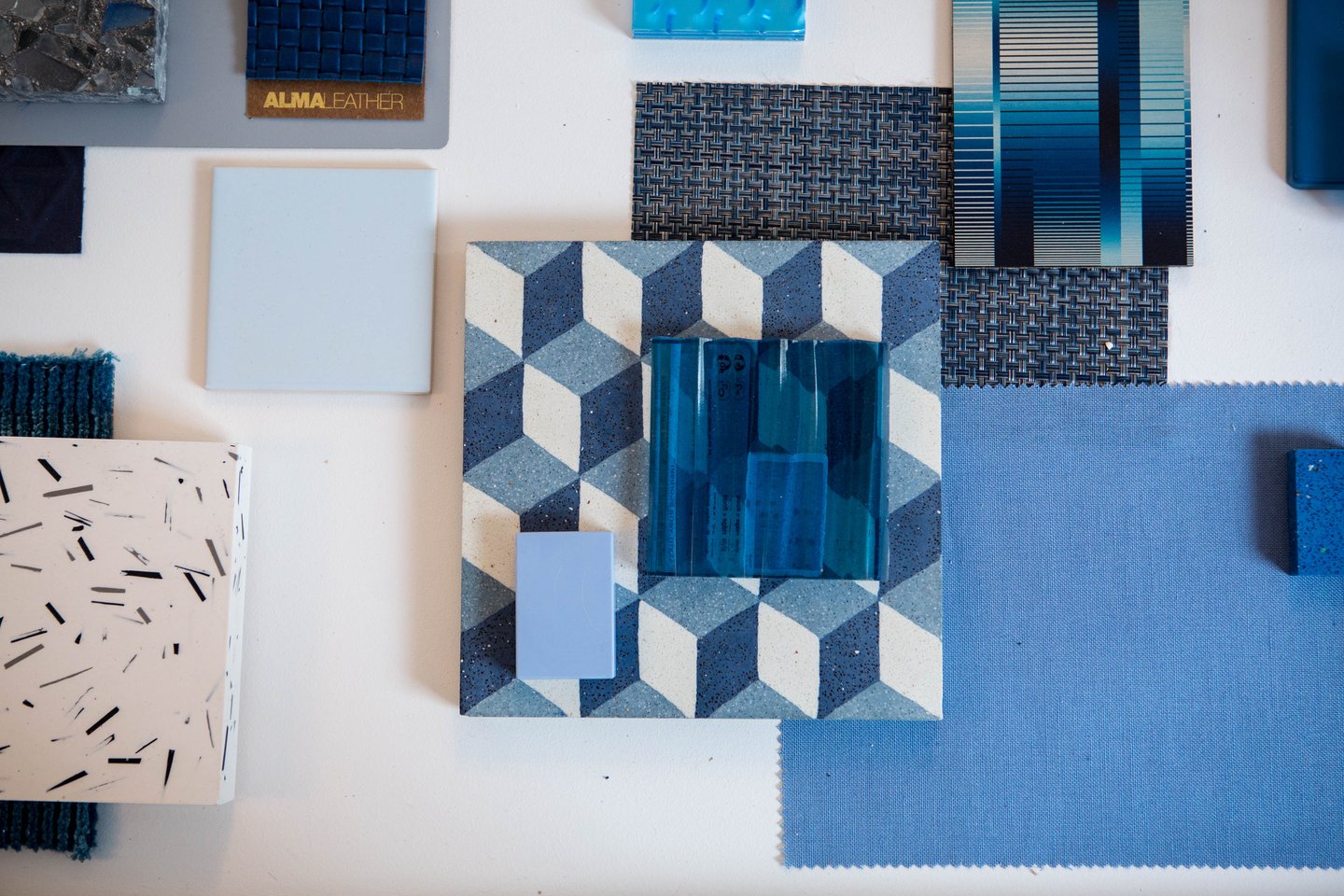
Dulux have called it – blue is the colour we’ll be working with most in our homes and places of work in 2017. Here are our thoughts on why they might be on to something.
It’s literally all around us.
As one of the shortest of the wavelengths that make up light, blue is the colour that gets scattered more widely within our atmosphere and absorbed more slowly by water making our skies and oceans appear to be varying shades of the colour.


One of the three primary colours, blue is a stalwart of all things chromatic, and whilst abundant in the natural world, it was once a rarity in our physical representation of the colour. Blue in the form of precious jewel stones were used ancient civilizations to adorn temples and palaces but recreating blue as a pigment was for centuries both a highly costly and notoriously difficult art form.
Lapis Lazuli, a semi precious stone found in Afghanistan offered people of the Byzantium Empire the only means to create Ultramarine, a vivid blue pigment, but mining and transporting the precious mineral made it more valuable to Renaissance painters than gold!
Traditional Asian and African methods of using the plants Indigo and Woad to create dyes for fabric were adopted by the Greeks and Romans and the colour became synonymous with status and power in the west. Blue continued to represent the same values up to the 18 th Century where it was introduced by the British and American Navy as their uniform colour. By the 19 th Century demand for the colour grew so high that scientists were encouraged to unlock its secrets through the development of synthetic dyes like methylene blue, indigo carmine and prussian blue.


Throughout history, blue has been intrinsic in the most sought after fabrics and clothing. At first as a precious colour extracted from marine snails, which was used for royal and sacred robes and latterly through easier to produce plant dyes. Levi Strauss, a very astute US hardware merchant who supplied clothes to prospectors during the Gold Rush introduced denim jeans, which swiftly became a wardrobe staple for the whole world over the next 144 years. From practical workwear to designer denims, most of us will have worn a shade of this indigo blue at some point…some more washed out than others.
Today scientists at Akzonobel in collaboration with scientists from the Natural History Museum and Sheffield University have begun to unlock the potential of using Biomimicry to create new colours and paints in a more sustainable and revolutionary way. The study is based on the vivid iridescent blue in a Jay’s feather. Watch this space for more on that one!
Come on down to the studio and click here to find out more about Colour Futures and the colour of the year, Denim Drift.